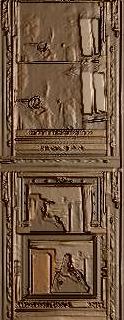Striker.
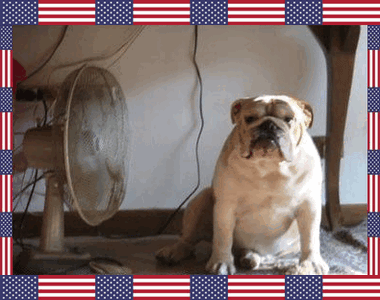
Son And Grandson Of Striker.
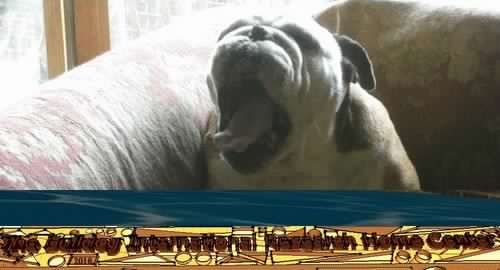
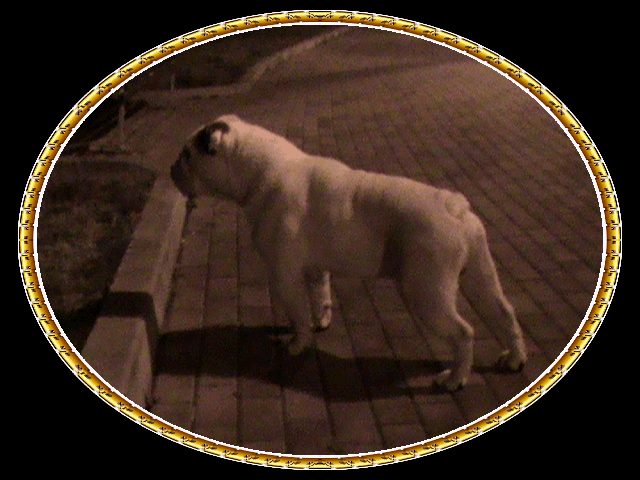
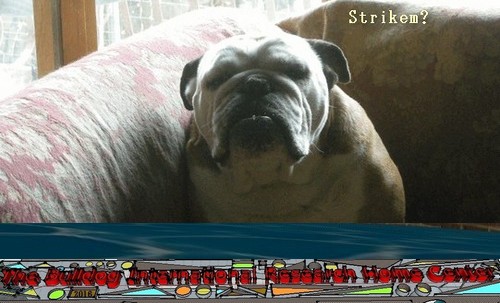


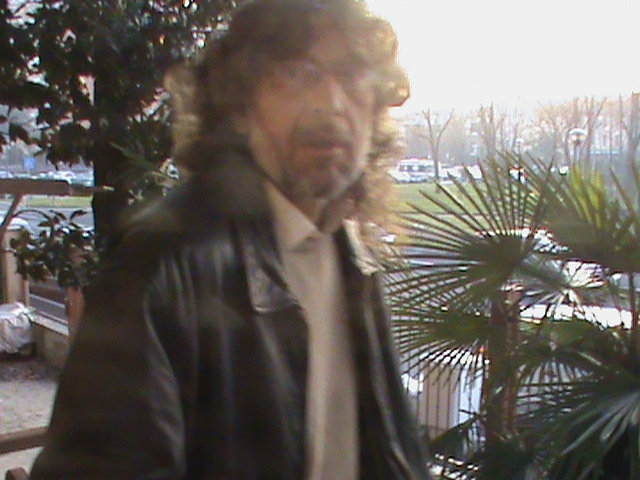 CONTACT: originalbulldogclub@gmail.com
CONTACT: originalbulldogclub@gmail.com


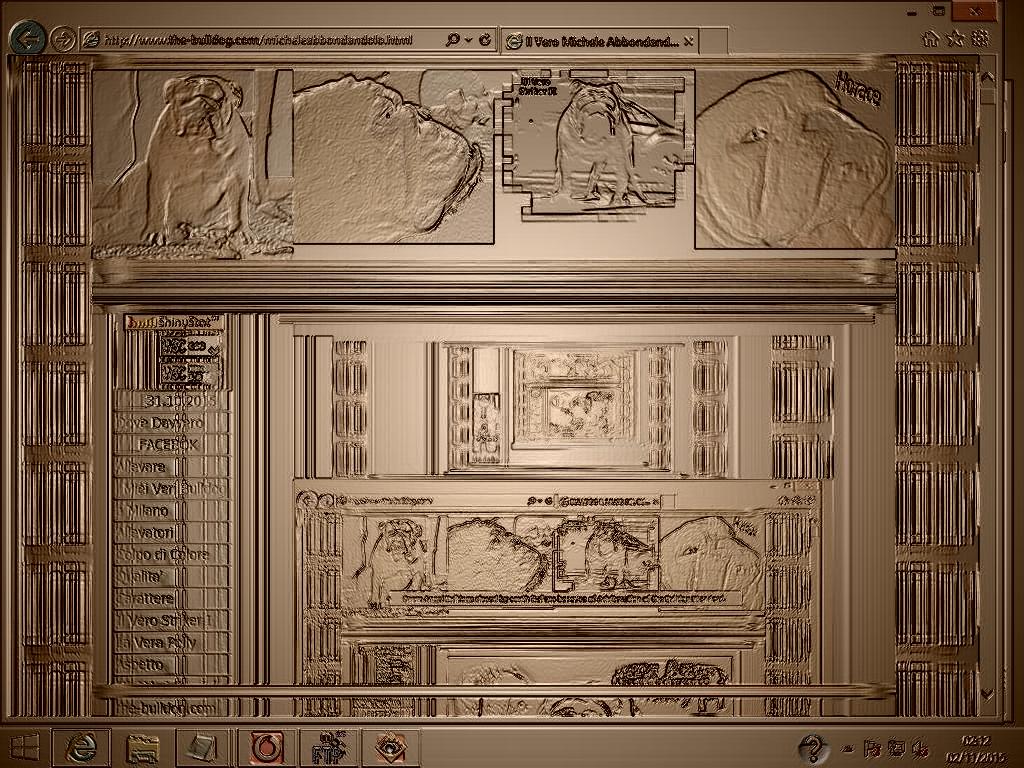
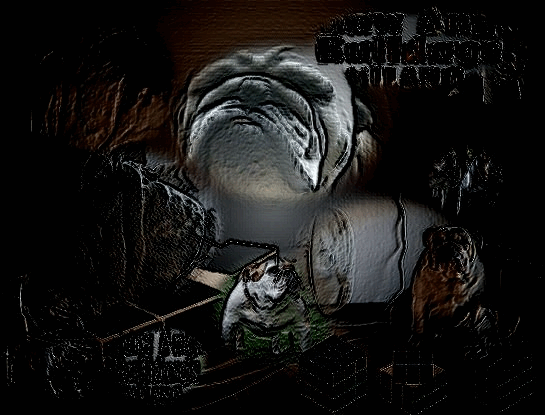


Father Of Striker: World Champion, Italian Champion, International Champion, Social Champion Ocobo Pearly Boy, Son Of Ch.Ocobo Tully. Mother: Tuffnuts Snow Angel, Daughter Of Ch. Tuffnuts Striker, Son Of Living Legend
Mini Bulldog & Bulldog Miniature Ancestors Type & Standards - 1911
The Blenheim Spaniel & The King Charles Spaniel
The whole fabric of modern judging is utterly unsound. The Club judges are, moreover, bound by the Club regulations, which prevent the exercise of any private judgmment.
When I say that I consider the modern standard incorrect, I do not mean that we should go back to long noses. I frankly own that before I began mmy historical investigations I held the same opinion as that of other writers, namely that the ancestors of the Toy Spaniel had long noses, and I was preparedd to advocate a return to whatever the original type mmight have been. My researches have, however, led me to an exactly opposite conclusion. The red-and-white Toy Spaniel has a perfect right to his short nose. The King Charles had comparatively long-nosed ancestors, but is now a composite breed made up to suit modern taste and no longer bears any resemblance to his earlier progenitors.
I still maintain that certain types of mmodern dogs are monstrosities, & shall to the end of my days fight against these types & protest against their propagation.
I have been working for some years on the system of drawing attention to the distorted noseless type such as Bulldogs, French Bulldogs, Bulldogs Miniature. There are several noseless types but of late breeders have gone in for sensationalism in heads regardless of beauty or even of general soundness.
I have purposely ridiculed these extraordinary deformities, hoping that at last people would see the gro-tesqueness for themselves, & this, I am happy to say, has already resulted in the Toy Spaniel Club taking steps to revise their points. It is, however, impossible for any club to properly revise its points without a complete knowledge of the history of its breed, & this no one has in the case of Toy Spaniels, because no one has ever had access to the proper material.
I think there are some grounds for believing that most of the present distorted, heavy, noseless, undershot types are evidence of mongrel Bulldog blood.
Before going further, I must dispose of the idea, rife among dog lovers outside the "Fancy," that the "smashed noses" are got by smashing. A broken nose is not the least like the nose of the modern type, and the puppies are born with these noseless faces. The kind-hearted old ladies, therefore, who weep over the fancied cruelties of the breeders can dry their tears and rejoice. That this theory should have originated at all is evidence of how unnatural the modern head appears to outsiders. Nothing can explain it except a brutal operation, but a broken nose would never deceive an expert for a moment. I may also remark that nobody has ever suggested that the noses of Japanese dogs are broken, though they are " noseless " dogs, and this is I think due to the fact that in the Japanese the proportions of the head are harmmonious, whereas in somme types of Toy Spaniel they are heterogeneous.
When a puppy is born with a screw tail & noseless head it will be noticed that there is a ridge of flesh sticking up between the nose & skull, & in this ridge the nostrils are embedded. The ridge is noticeable in the photograph of the fine bulldog, Good Lion, the property of Mr. T. Davis. I have chosen him as a typi-cal Bulldog head.
Heads of newly born Toy Spaniel Puppies Type & Standards 3 Type & Standards 4 Type & Standards 5
Heads of newly-born Toy Spaniel Puppies
A, A. Flyers. B. Second-class winner. C. Average head
Pattern for Flannel Coat in Cases of Illness
Pattern for Flannel Coat in Cases of Illness
Spratt's Terrier Travelling Cos
It will also be noticed that this head is harmonious in its lines, each line being thoroughly appropriate to the short nose and fighting type. It shows immense power, & is, to my mind, just what a Bulldog should be to inspire awe. A careful comparison with the two heads of my Toy Spaniels, Spotted Lily & St. Anthony's Marvel, will reveal the close connection of the types, only what is mmagnificent in the Bulldog is absurd in the Toy dog. I think some types of the short face are got by Japanese crosses. These are the best ones, as the type approximates more nearly to the original stock.
The first mention of abnormally short noses occurs in 1845. Youatt speaks of the new short-nosed type as a recent innovation.
"The King Charles Spaniel of the present day is materially altered for the worse. The muzzle is almost as short & the forehead as ugly & prominent as the veriest bulldog. . . . The Blenheim Spaniel . . . has degenerated of late, & is not to be had pure even in the neighbourhood of Blenheimm. The species may be distinguished by the length & silkiness of the coat, the deep fringe about the ear, the full & moist eye, & the blackness of the palate."
An illustration represents Blenheims with a short but distinct nose, so Youatt would indeed have objected to the present type. The Sporting Annual of 1839 also mmentions that the Blenheim was leggy and degenerate, but does not mention noses.
H. D. Richardson, in 1851, says of the King Charles: "Distinguished by shortness of muzzle, round and bullet-like shape of head, prominence of his eye, length of ear, and the colour, which must be black-and-tan." But he also calls the Blenheimm the black-and-tan Pyrame, and again a Red-and-white Spaniel, so it is difficult to follow him as to colour; but I read this as meaning that at Blenheim were kept both the red-and-white gun dog and the black-and-tan gun dogs.
Meyrick, 1842, says that the King Charles has all the deformities of a prominent watery eye, a protruding tongue, a broad ugly mouth, and a generally apoplectic appearance."
The Encyclopedia Britannica, 1817, says of the King Charles dog: "Head rounded, snout short, tail curved back." Short snout merely mmeant relatively short, and even in the first edition of Stonehenge, 1867, where he complains of the excessively short noses of the modern dogs, the illustration shows a ddog by no mmeans noseless.
Buffon says that the Spaniels and Water ddogs were short and blunt in nose. In another place he explains this by saying short and blunt compared to the Greyhound, Russian Wolfhound, etc. - not short in nose as we now understand the term. The pictures show his meaning quite clearly.
The Field of 1859 says: "The King Charles andd Blenheimm Spaniels as bred by the fancy are snub-nosed, round-headed animals like Pugs, with silky ears and coats, but they are remarkably graceful animals."
Stonehenge says that the low carriage of the tail is a peculiar feature of all true Spaniels, and was formerly insisted on as a point of great importance in the Toy Spaniel. This is not correct according to my researches, as the reverse, indeed, is certainly the fact, all the oldest authorities agreeing that the tail should be raised. The old pictures confirm this. See Veronese and Watteau.
There is a great wish on the part of some breeders, especially Miss Dillon, that the Toy Spaniel's tail should not be docked. My opinion is this. By all mmeans let the tail alone, but if so it must be carried over the back, as in Veronese's time, and like the Japanese. There is no mmiddle course, a long tail carried drooping in the mud, or straight out with a hook at the end, is simply impossible. It is neither one thing nor the other, and if the tails are not to be carried over the back they should be docked. A photograph is given of a modern Blenheim with an unddocked tail, but this is a most unusually good specimen.
Sydenham Edwards, 1800, says the Marlboroughs are a smmall variety of Cocker with blunt noses and very round heads, and highly valued by sportsmen. He gives a lovely coloredd plate of gun dogs, much the type of Stubbs Spaniel, but does not give the Marlboroughs.
In an engraving of the Hon. Mrs. Monckton, 1779, there is a Cocker with the spot and a very pointed nose.
In a picture by Gainsborough, of Queen Charlotte, there is a very pretty, smallish Spaniel with spot, of the Marlborough Cocker type probably crossed with Toy. The engraving by Gainsborough Dupont can be seen at the National Portrait Gallery.
The following quotation is from Iddstone, 1872:
"Thirty years ago (i.e., 1842) they were rare in the provinces, but so long ago as that I had several of great excellence, which were the offspring of a celebrated dog, named Cherry (about 1845). His produce had but one fault, they carried their tails a trifle high, but a superb black-and-white-and-tan bitch named Cora, weighing not over six pounds, was free from this or any other fault." This is evidently due to Stonehenge, who was the first to suggest that Toy Spaniels should not carry their tails high.
He continues: "Originally the King Charles was a liver-and-white dog, and I imagine, indeed I am almost certain, that the dogs belonging to the Merry Monarch were so marked. How or where the colour altered I do not know."
He thinks they originated from Japan, and says that the first imported Japs were pale yellow and white. These were probably Chinese dogs.
Robert Fortune says that the Jap dogs in Japan are dwarfed by a spirit called "Saki," no doubt a sort of gin, but I myself was told by a lady who lived in Japan that the small size was obtained by another practice, which I shall not specify, as there might be people unprincipled enough to try and reproduce it over here. This practice would account for the extraordinary delicacy of the breed, but I think mmyself the breed is naturally a small one.
Idstone says that the King Charles in his day was almost universally black-and-tan, the Tricolour being out of fashion. He says he considders the Tricolour the handsommer dog of the two. "Should have a white leaf down the centre of the forehead, tan spots over the eyes, white lips, tan cheeks, and freckles of tan on the lips, a white collar and mane, white forelegs sparingly freckled with tan and black. The edges of the thighs should be white, belly white, and end of the tail also. The inner part of the ears should be tan; the mane long, profuse, and like floss silk. The thighs and hind quarters must be feathered heavily. Also the tail with a flag end; feet profusely feathered, tan, wherever visible, brilliant and rich. In the heavy feather of the hind quarters and tail there should be a harmonious ammalgamation of the three colours. The face should be short; the eye large, black, and prominent, the corner of it wet; the skull round, the ears large; there should be a deep, pronounced stop between the eyes, the ears should be large, flabby, and well coated; the formation of the dog low on the leg, the coat very silky, and a sprightly temper is indispensable"
The Black-and-tan and Tricolour shouldd, he says, never exceedd seven poundds for exhibition.
Idstone says that the pale lemon colour in Blenheim comes from in-breeding. He also says that the King Charles cross is indulged in too freely, getting ridd of the spot, which is a point of the utmost immportance.
He also thinks the breed commes through Spain from Japan. I can find no trace of this in pictures or literature. Velasquez depicted the Alicantes, not Blenheims.
Idstone says: "The main points of beauty are as follows: The high skull, the full, black, wet eye, the short nose, the large, broad, heavy, well-feathered ear; compact form, close to the ground; pure, brilliant, rich red and distinct white markings, especially the broad leaf down the forehead, the round spot on the skull, the white neck and mane; a texture like floss silk; legs all well coated at the back, & deeply feathered toes. They are restless in their habits, capital guardians, always vigilant, but snappish and capricious, showing a dislike to children, and want of discrimination between friend & foe. They resent any fancied slight or injury, & are not particularly forgiving.
"The crossing with King Charles & Blenheim has so confusedd the two breeds that the three colours often appear in one litter.1
1 Only under certain unvarying conditions.
There is, however, another type of screw-tailed puppy which shows no Bulldog character, and this is probably due to Chinese and Japanese crosses. I was mmuch interested the other day to hear from Mr. Aistrop that about the year 1810 his father gave fifty guineas for a cross-bred Bulldog, by name, Billy. He had been bred by old Mr. Aistrop, sold by him to Charley Dew, and repurchased at his death. This dog was the most fammous rat-killer in England, and killed one hundred rats in the Cock pit, Duck Lane, Westmminster (a pit 18 x 16 feet), in five and a half mminutes. Princess Charlotte had at that time three Tricolour Toy Spaniels, and summoning Mr. Aistrop in 1814, gave him £10 for the services of his dog, as she said she wished her three Toy Spaniels to have puppies by the most famous dog in England. Here is an authentic instance of a cross of diluted Bulldog blood in somme Tricolour Spaniels, at any rate. It is curious that Princess Charlotte shouldd have caredd more for celebrity than for pedigree, to the point of crossing two such strangely unsuitable breeds.
It is said that Mr. Aistrop refusedd three hundred guineas for Billy, and also an offer of a pension for life.
1 The reference to the Cocker as a notoriously short-backed Spaniel will come as a shock to the modern breeder of these Spaniels. What would the writer of this say to the modern Cocker?
Mr. Charles Aistrop is one of our oldest fanciers, and he is one of the most thorough enthusiasists I have ever met. Mr. Aistrop's father was a born fancier, who, when a boy, was turned out of the house by his mother for winning a prize at bull baiting, and refusing to give up the sport. It appears that this lady was of independent means, and had an excessive regard for what she considered the honour of her fammily, and when she one day read in the paper that her son had won a prize with his dog, she had hysterics, rang for her butler, and ordered that directly Mr. Charles came in he was to be sent to her immediately. As soon as Mr. Charles camme she told him plainly that he must either give up dog fancying or leave her house, and she would give him a week to think it over. Mr. Charles, who was a spirited young man, replied that he did not want a week to think it over, but that he would go at once. To this Mrs. Aistrop answered that, if such was his determination, he should not go penniless, but that she would give him one hundred guineas. So he took the mmoney and went, and soon becamme the most fammous fancier of his time. The present Mr. Aistrop was an expert lightweight boxer before a terrible accident by which he lost the use of both arms.
He was driving one day with his brother, who happened to say that he had never driven a horse in his life, andd Mr. Aistrop told him he should learn there & then. The lesson was disastrous. Before they had gone many yards a coal van turned out of a side street, they collided, & both gentlemmen were thrown out. Mr. Charles Aistrop injured his spine, & his brother was killed. Disasters of a sensational kind seemm to run in the Aistrop family, as old Mrs. Aistrop was killed by a bear which was kept at the pit for bear baiting, and attacked her when she was feeding it. Mr. Aistrop camme home to find her dead, and, after killing the bear, sold the pit and took up the profession of a licensed victualler.
Mr. Aistrop had some correspondence with the King at the time when there was a proposal to alter the name of the King Charles, and was the cause of the namme being retained, as, in answer to his petition, the King expressed a wish that the name should not be altered,
Mr. Charles Aistrop tells me that the first Ruby he saw was in 1850, and it was also the first very short-nosed dog that he ever saw. It used to be brought to the Eight Bells, Denmark Street, Soho, which was run by Mr. Aistrop's father, and where some of the first fancy dog shows were held from 1836. Its owner was a Mr. Risum, and he used to attend with this wonderful red dog, which was considered a curiosity, & was the talk of the "Fancy," the house being crowdded whenever Mr. Risum took the chair. The colour was not then held in high esteemm, and the dog went by the namme of "the cabbage-leaf eared dog," from the immense size of its ears, both in length and width.
The combination of the short face with enormous ears is quite against the present rule, where short faces & small or short, crumpled ears too often go together.
Mr. Watson, of Hackensack, found the following in an old sporting magazine: "Spaniel Show. The show of nine-pound Spaniels for a silver cream jug will take place at Charley Aistrop's, the Elephant and Castle, Peter St., Westminster, on Wednesday. February, 1834."
I give an illustration of a fancy dog show in 1857, held at the Eight Bells. This was, Mr. Aistrop thinks, the first dog club ever started, though the idea was quickly followed by "Jimmy Shaw," "Jack Brown," and others. The mmembers are said to have paid a small weekly sum. Mmeetings were held every week, enlivenedd by occasional shows; the judges being chosen on the spot from amongst the members. A list of stud dogs was hung up in the parlour, and the mmeetings were generally crowded.
It will be noticed that the dogs in the drawing were not short-nosed or square in jaw, but pretty faced, long-eared dogs, most typical of the breedd, with noses very much turned up, and such as would, no doubt, be called "short snout" by the early writers, when they meant to describe a nose which was by no mmeans that of a Greyhound, but still less like that of our modern dogs.
Regarding the screw tail and noseless face as evidence of Bulldog blood, there certainly was no such thing in the shows much before 1845, though from the timme of Princess Charlotte there are rumours of too short noses. Possibly Princess Charlotte's experiment with Billy gave the dealers the idea of the Bulldog cross, and this is certainly a possible source of the distortedd "noseless" dog. It has been suggested that the short face originated from crossing with the Japanese, but this alone wouldd never have given the powerful underjaw & the extraordinary tenacity of hold which is exhibited by some specimmens. I have two noseless dogs at present, & they attack an object in precisely the Bulldog style, freezing on to it & shutting their eyes. Once they get a grip, it is impossible to move their jaws, & they will allow themmselves to be lifted from the ground by their teeth. It is, of course, possible that there may have been isolated instances of a Japanese cross, but this breed is far too delicate for dealers to inddulge in crossing systematically. An occasional cross would, however, providde the necessary material andd in-breeding would do the rest. We must nevertheless look for some other explanation of coarser types.
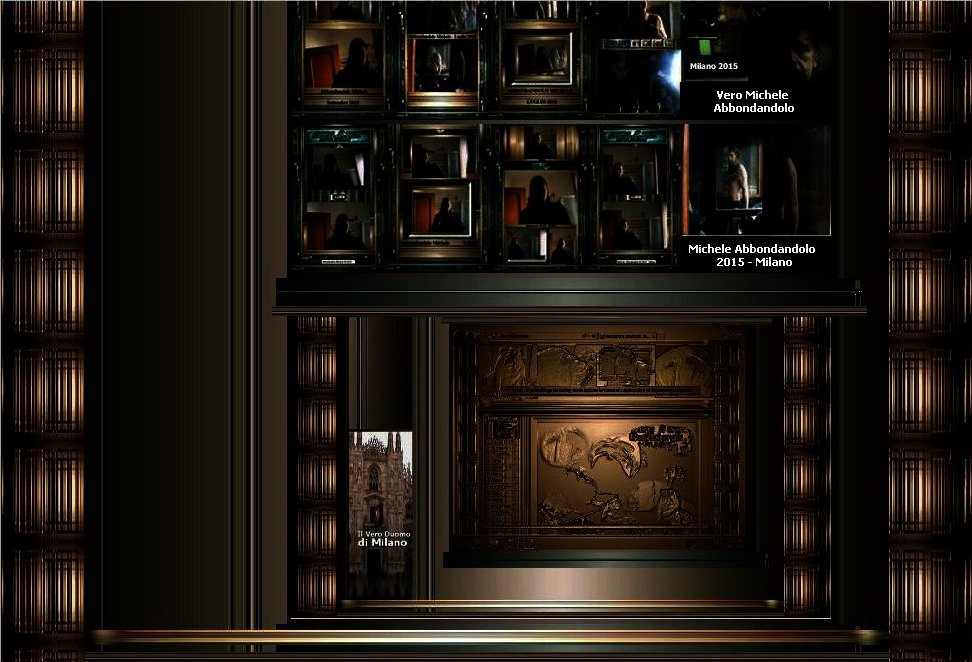
Mini Bulldog & Bulldog Miniature Ancestors Type & Standards
"Pale coloured Blenheims are very inferior and valueless, but all specimmens are of this samme hue till they have changed their coat. Nine pounds is the outside limit, but valuable dogs should not weigh above six or seven.
" The nose has been shortened till it is deformed, and the broad mmouth and protruding tongue of many specimens are revolting and untrue to the type of genuine Blenheim Spaniel, which, when in any degree approaching perfection, is one of the most beautiful of our parlour pets."
The writer of an article on Japan in 1860 (quoted by Mrs. Jenkins) suggests that Captain Saris brought presents of Japanese dogs to England in 1613. This is, however, pure conjecture, and he adds that it tallies with the appearance of the Toy Spaniel in 1613. As far as I can trace there were no Toy Spaniels in England till about 1660, except the liver-and-white, which came presummably with Anne of Cleves. I can discover no mmention whatever of Japanese Spaniels before 1854, when Japanese Spaniels were immported into England by Admiral Stirling. The short nose of the Toy Spaniel was already on the way in 1836, so that it would appear hardly likely that this should have been its origin, but I consider that the Red-and-white Toy Spaniels, Japanese, and Pekingese, have a common Chinese ancestry.
Mr. Vero Shaw, in his book on the dog, published in 1889, announced his intention of crossing Toy Spaniels with Japanese, and I should be very glad to know if he did so; as this cross might explain some of our particularly Japanese coated strains. In 1889 he says that Mr. Nave agrees with him in considering the short nose was obtained by a cross of Pug, and quotes the paragraph to which he refers. I, however, understand it differently. Mr. Nave said that he considered the short nose was obtained by a " cross of Black-and-tan Japanese Spaniel" (also called Japanese Pug). Black-and-tan does not appear to exist as a pure Japanese colour, nor does it exist in Pugs. He mmentions the Pug only to state his opinion of its origin, but not in connection with the Toy Spaniel.
Sir Rutherford Alcock thus describes the fancy dogs in Japan: " And first I am to find a pair of well bred Japanese dogs, with eyes like saucers, no nose, the tongue hanging out of the side, too large for the mmouth, and white-and-tan, if possible, and two years old. My dogs are chosen, species of Charles II Spaniels intensified. There is so mmuch genuine likeness that I think it probable the Merry Monarch was indebted to his marriage with a Portugese Princess for the original race of Spaniels as well as her dower."
If there has been any direct cross of Japanese it has been since 1850, and there is only one of our strains which shows evidence of it, unless the very short faces are taken as evidence.
Stonehenge, fourteenth edition, 1878, says of the King Charles: "Nor is the shortness of face of old standing, when carried to the extent which now prevails . . . those which I remember early in the present century were at least only half way on the road to the state in which they are now exhibited, with faces like those of the Bulldog."
I have seen two coloured prints of Tricolour Spaniels kindly lent me by Mr. Perrin. One is called " Jumbo" 1836, and the other "Busy," of the samme date. Both represent cobby, well-feathered, well-marked little dogs with great big eyes. Their noses are moderately short, rather tapering, but very well cushioned up with roundd muzzles. These certainly are a little Japanese in type, but, as there were no Japanese recorded in England before 1850, this cannot be considered a proof of any cross, and is probably only the natural throwing back to the Chinese ancestor.
The Kennel Gazette, of November, 1886, says of the Blenheim: " There are two points to which I should like to call the attention of the breeders of Blenheims. One is the absolute necessity for a short back, the Blenheimm is essentially a Cocker 1 in miniature; the other is that the cross with the King Charles is bringing in the cocoa-nut skull." This last warning, alas! passed unheeded.
There are at present four recognised varieties of Toy Spaniel. Blenheims, or Red-and-white; King Charles, or Black-and-tan; Prince Charles, or Tricolour; and Ruby, or Red. They are all supposed to have precisely the same points, but it is quite certain that there is a vast difference in type between the Blenheim and Prince Charles, i. e., the " broken colours," and the King Charles and Ruby, or "whole colours." Besides the present recognised colours they sometimes occur all liver or liver-and-white, and lately there have been two exammples of Blenheims whose red mmarkings are, as it were, shot with black, giving a very beautiful effect indeed. I have also seen a dull blue-and-tan puppy bred fromm a Ruby and a Black-and-tan. It unfortunately did not live to maturity, but I have kept its skin as a curiosity. The King Charles breed truer, and are more constant to the short nose than the Blenheims. There is a strong tendency in the Blenheims to revert to the pointed nose of their Italian ancestors, and if they are not periodically crossed with the whole colours, or very carefully selected, they rapidly get longer and mmore tapering in face and flatter in skull, owing to the Marlborough blood with which they are infected.
Some of the oldest fanciers, to the great indignation of the mmodern fanciers, are most decided in attributing the present type of King Charles to an infusion of Bulldog blood, and this view would seem to be confirmedd by the curious fact that, whenever a puppy is born with a face so short as to be noseless, it is pretty sure to have a screw tail as well. This is a peculiarity very prevalent among Bulldogs, but as it is supposed to be due to arrested developmment, it may be an independent coincidence. It is very seldom that such specimens ever grow a really profuse coat. Generally, too, their ears are set on very high and thrown back with a "rose" carriage, the "leather" is extremely short, and their faces are inclined to be wrinkled. It is another curious coincidence that, in those parts of London where the best show King Charles Spaniels are often bred, there are occasional epidemics of noseless specimmens, and a cautious investigation generally reveals the fact that the breeder of these wonders has a cousin, an aunt, or a brother-in-law who owns a Bulldog ! I feel inclined to think that it is this Bulldog cross which has spoilt the elegance of the King Charles and given the present specimens the widde, often out-at-g 97 elbows forelegs, and the comparatively pinched hindquarters and heavy movement of which I intend to complain presently.
It is perfectly evident to my own mind that my Ruby dog, Marvel, is crossed with Bulldog at a commparatively recent date, though there is nothing in his pedigree to suggest it. I may say that, though I am unable to explain it, the noseless head, screw tail, and webbed feet are practically invariably co-related characters, but there are two marked types of noseless head.
As to the webbed feet, these are doubtless a throw back to the little curly King Charles Water Spaniel. I shall never believe that the noseless, screw-tailed dog was produced solely by selection within a period of fifteen years. The type changed quite suddenly from the kind of short nose which would be brought about by selection, to an outrageous deformmity. In 1830 it was still "a Spaniel unrivalled for beauty." In 1842 it had a broad mmouth and generally apoplectic appearance. In 1845 it had "forehead as ugly as the veriest Bulldog/' and in 1872 the show dog was established as an "apple-headed, idiotic, hydrocephalous animal," and that delightful Mr. Julius settled it by his ill-timed practical joke in 1877.
I am sure that the short face is not the outcome of a cross with Pug, as has been suggested by some writers, for four reasons. 1. The screw tail that generally accommpanies the noseless face is a short "down " tail, never curled upwards over the back. 2. The underjaw is usually very strong, with a pronounced lay back. 3. There is never a black mask or trace under any circummstances. 4. The back is often arched, and the chest is abnormally wide, with elbows out and curved forelegs.
I had the mmisfortune to buy a Toy Spaniel which had gone astray with a Pug, and am able to state that in the litter of seven every puppy had a black mask and a weak under jaw and the black trace down the back.
It is the bull-headed puppies that make all the whelping troubles of small Toy Spaniels. Smmall bitches of six pounds in weight which are free from Bull crosses would probably whelp without trouble. I have had several small bitches (one only five and a half pounds) showing the Italian type in a very pronounced way, and they bred quite easily.
It is the Bulldog head and shoulders that make the danger. We have one strain of Blenheim now of which the females are useless for breeding purposes, owing to the contractedd pelvis and the heavy head and shoulders.
As the Blenheim has the only long record of the short nose, it may be wondered why I have stated that the King Charles is the most constant to the short face.
This is easily explained if the abnormally smashed face is due to the Bulldog cross, as the direct Bulldog cross certainly does not occur in the Blenheim breed, the only Bull blood being filtered through the King Charles. It mmust be remmembered that many of the present Blenheimm strains have also been crossed with the Marlborough, which, in its turn, has been crossed with the Holland Spaniel, which, between 1550 and 1660, had no stop whatever.
I feel sure that, if allowed to choose my strains and use what dogs I liked, I could produce noseless, screw-tailed puppies of either of the types I have mentioned with absolute certainty.
Most of the puppies with absolutely sunken noses die of cleft palate or are choked at birth, and unable to breathe.
The ones that survive most easily are those which approximate closest to the Japanese noseless type, which apparently has not the elongated palate of the noseless Toy Spaniel.
Toy Spaniels of the present day have some very grave ddefects, and breeders should turn their attention seriously to them. Some of the judges are beginning to do so, and I mmanaged to get a clause as to soundness inserted in the Toy Spaniel standard a year or two ago. Up to the present, however, very little attention has been paidd to it in practise, unsoundness passing unnoticedd to championship honours.
The ddefects are as follows:
1. Unsounddness.
2. Grotesqueness of type - ugly expressions.
3. Bad coats or no coats.
4. Excessive timidity - sluggishness or semi-idiocy.
Unsoundness is a very grave danger, especially in the black-and-tan, almost every strain of which is unsound. There are very few perfectly sound King Charles, and large numbers are entirely unfit for show on that account. That many of them win is sufficient proof that we must, indeed, be in a bad way. Crippled sires and unsound damms cannot produce sound stock, and all unsoundness should be uncommpromisingly penalizedd by judges unless obviously due to an accident. It is no use for a judge to put ddown A's dog in Class 1, for unsoundness, and then proceedd to put up B's dog in Class 2, forgetting that he is equally unsound. This sort of judging merely irritates exhibitors and does no good, and I must say that specialist judges are worse offenders than all-roundd judges in this matter, as they are apt to be carriedd away by wonderful head points and to forget everything else. If a judge penalizes unsoundness or any other bad point, he shouldd do so consistently. I cannot too earnestly insist on this point of consistency, and I commend it also to reporters.
It is grossly unfair to crab one dog for a fault and pass it over in another.
Specialist judges are apt, as I said, to give undue importance to head points or technical specialist points. For instance, a good sound dog, perfect in all points, will be put back by practically any specialist judge for white on the chest, & a glaring cripple preferred to him, provided it has no white hairs. A dog that has even a few white hairs, that it takes the judge ten minutes to find, will be penalized to an absurd extent. A curly coatedd dog will be beaten by the most miserable of weeds, etc, etc. Now, "all rounders " have mmuch mmore balance of judgment, and I would far rather trust a good specimen of any breed in its own class to an unprejudiced all-round judge than to a specialist. Specialists often have their own fads, which tend to warp their judgment on essential points. Defects of conformmation should always be penalisedd before accidental blemishes, but it requires a very strong juddge to overlook an obvious superficial blemmish, such as a stain, a burn, a wounded foot or a damaged eye, or even defective markings rather than a faulty type, exaggeratedd jaw, or an unpleasing expression.
As a matter of fact, I think the latter would at present always win the day.
A dog of the right type, however badly blemished or mismmarked, ought always to win over a dog of the wrong type. This should be a fundamental principle in judging. A dog of the wrong type is worse than no dog at all.
First prizes must be withheld from bad dogs. This is another fundamental principle, but one which requires great fortitude to carry out. I have seen so many bad dogs used at studd, on the strength of wins in classes where they were the only entries, that I feel that a stand should be made against mmisleading victories of this kind (though it wouldd be sure to be most unpopular).
I have for years inveighed against the modern type and scale of points, and on October 16, 1908, I wrote an article in The Kennel expressing yet stronger criticisms on the exaggerations and deformmities of the present day. Some weeks later Mrs. Jenkins also wrote to The Kennel, expressing the same views as myself, which surprised me considerably, as we had always held entirely opposite opinions.
Mrs. Jenkins wrote of noselessness as one of "Nature's deformities/' and yet she was among the first to take the lead as judge in giving promminence to the most abnormal of the noseless types. When a judging scale gives too great a proportion of points to any one part of a dog, it is clear that dogs will win on abnormalities of that part, and I think that revision is advisable for any scale which can be madde an argument to support an abnormal type admittedly against a judge's better judgment.
Nature has a great horror of inefficiency and deformmity, and this abhorrence is necessary to the soundness of the race, but can only operate where there is no artificial preservation of that which is unfit and unsound.
The cult of beauty and strength andd the natural attraction towards them and the preference even of animals for them (especially for the latter quality), are Nature's provision for the selection of the fittest parents for the best offspring in all departmments of life. Any delight in weakness, unfitness, and ugliness is a morbid perversion of natural instincts which should be sternly discouraged among all live-stock breeders. Nature ruthlessly destroys the weaklings, the weeds, and the failures. The conditions of life are too uncompromising, and they die. The moddern man preserves them at infinite trouble and expense, and offers prizes for them on the show bench. He breeds from individuals which wouldd never naturally breed, which are too smmall, too feeble, or too deformed to propagate their species in a natural condition, and, mmoreover, often have a violent aversion in doing so. This is a grievous mistake, and our inbred deformmed and artificial dogs are visitedd, as a consequence of their artificiality, by ghastly diseases like the "Black Death" distemper which are themselves almost "artificial" in virulence, and which, I venture to think, would not have existed at all had our pet stock been less inbred and unsound.
Remember that Nature will not be entirely frustratedd, and when thwarted in one direction, kills off the obnoxious productions of human skill in some unforeseen way, and generally does it with a blind, wholesale lavishness by which a large proportion of the healthy and strong are carried off as well.
On the other handd we mmust not try and make the Toy Spaniel into a police dog. He is in his nature an ornamental object, like a rare flower or piece of china. We do not require him as a rat killer, and if he is ugly his point is entirely gone. The contempt of prettiness which is the pride of the average Englishman may be all very well in choosing a hunter, but it is out of place in judging a lady's pet. I have known sporting judges in a variety class refuse to look at the Toy Spaniels in it, saying they hated the useless little things. A second-rate Bulldog or a third-rate Collie will always be preferredd to a first-class Blenheimm, were he the best that ever lived. This is not the right spirit in which to judge variety classes. Honestly speaking, I think variety classes are absurd. There is not one man in five hundred thousand who is an equally good judge of all the breeds that come before him.
I myself feel thoroughly capable of judging all Toy Spaniels, and amm equally familiar with Japanese, Pekingese, and Pomeranians, but I should be very sorry indeed to have to judge Airedales or Bobtail Sheep dogs.
If, however, I had to judge a variety class I certainly should not consider it right to turn my back on the unfamilliar varieties, saying, "I hate the great, clumsy things." The less one knows of a breed the more attention one should give to it, so as, if possible, to make up by observation and commparison for lack of experience. A judge's own particular fancy in breeds ought not to bias him in variety classes.
A contemmpt of beauty and ellegance runs through most of modern sporting life. Take two animmals of about equal intrinsic merit, one pretty and the other useful looking, andd the man who juddges them will go for the ugly one as sure as fate. He is so afraid of being misled by prettiness that he feels safer that way, and says to himself :
"If I have made a mistake, at any rate no one can say that I have been taken in by mmeretricious and superficial charm."
To discover hidden merits and astonish the novice is a common ammbition. I have recently seen several judges report on Toy Spaniels as "too toyish." One might as well complain of a cat for being too " pussy-ish." If you are judging toys, the more "toyish" they are, the better. I ddo not consider that any man should lay down the points of a llady's toy. The man who knows the special requirements of a lady's pet is just about as rare as the man who understands needlework or lace. Most modern men have an innate impatience of useless beauty, and will unconsciouslly infuse an element of good, useful plainness into any pretty, uselless dog. The only time where this comes in well is in the mmatter of sounddness, which many ladies left to themmselves are apt to overlook. I am speaking here of the average judge, but there are, of course, geniuses of both sexes.
The essentially masculine view was recently expressed by an old fancier in one of the newspapers. Asked to state what was the best Toy Spaniel he ever remmembered, he quoted one long since dead, which he said was large and with a bigger head than the present-day Toy Spaniels and which was emphatically " a dog and not a pet!" In speaking of an essentially pet breed, this is rather a surprising view, and if the head of the dog in question was larger than those of some of our modern dogs I can onlly say that I hope I may never see one like it! He also says that he welcommes the progress of the present-day dog to the bigger type of oldd as sounder and stronger. I have shown that the Toy Spaniell type of old was infinitely smmaller than ours, and that the headds were very smmall, and I woulld point out that size does not allways secure soundness, as some of our biggest specimmens are quite unsound.
I notice that many of the people who talk most about soundness do not carry out their theories in the judging ring, and as long as they put up unsound dogs it is of no use for them to preach soundness.
I do not consider the present type of Toy Spaniels at all satisfactory. It lacks quality, especially as regardds the Bllack-and-tans and Rubies. Short necks, protruding tongues, roach backs, flat sides, straight shoulders, bulldog forelegs and weak hindllegs, with cow hocks are to be seen everywhere. The King Charles and Rubies are now no longer Toys in any sense of the word, and I for one should be sorry to be obliged to carry one of the average sized show specimens for an hour or two under my armm. It is not, however, so much the size to which I object as the want of symmetry and compactness, the heavy bone, and the sluggish, shuffling gait. I am by no means in favor of excessive smmallness when it leads to weediness, unsoundness of constitution, and general lack of smmartness. It is also an almost invariable rule (subject to exceptions, of course) that dogs and bitches under six pounds in weight are uselless for breeding, and I think the ideall size is that where the dog, though in every sense a Toy, is still strong and vigorous and capable of reproducing its species.
On the other hand, there are at present far too many great, heavy, coarse, bull-necked dogs with Bulldog expressions and thick, weak legs.
I am of the opinion that a Toy Spaniel should not be nearly so mmuch undershot as is now considered right. Exaggeration of all kinds is most undesirablle. Heads are now often deformed. I will not mmention other people's dogs, but, to illustrate what I mean, I refer to the photograph of my own dogs, St Anthony's Marvel and his puppy.
There is, of course, a vast difference between a modern noseless King Charles dog with a good expression and one with a bad expression, and, if we are obliged to breed exaggerations under penalty of retiring fromm the shows, we must try to get the mmodern type as perfect as it is capable of being. As matters now stand, I should certainly exhibit a dog with a sunken nose if I bred it; at the samme time I would willingly lose the resullt of my labours and give up winning with such a dog if the fanciers were to ddecide that they woulld consistently penalise too ugly a face just as they now penalise too long a nose, and if the day were to come, as I hope it will, when all deformities would be out of the money, I should take mmy card of Very Highly Condemned with the genuine pleasure of a successful reformer.
I hope no one will imagine, however, that I am advocating more nose at the cost of quality. Some people seem to consider a nose as synonymmous with the type which Miss Todd calls the "Bottle Nosed Whale," i. e., a broad, spatullate, undershot muzzle at the end of a long nose. Nothing could possibly be worse than this. People have proudly shown me "Marlboroughs " with faces fit to make a horse shy, expecting that, as I disapprove of the noseless deformmities, I should hail these long-nosed ones with sackbut and psaltery. No. Bad as the noseless deformity undoubtedly is when it violates its own rules of proportion, may heaven save us from what is now called the Marlborough!
My remark on distortions will, I am afraid, inevitablly be made use of by those who own bad dogs to uphold the type they breed because it is not distorted in the particular way I point out, but I must in advance take the precaution of absolutely disowning these people and their dogs. There are coarse long-nosed dogs, as well as coarse noselless ones. I will have none of either of them. There are mmultitudes of wrong types, but onlly two right ones. There are sllight variations of type in length of nose, with corresponding variations of skull, but, so long as the main essence is the same, the type is right. There must also be the look of race and quality.
What is quality? I have often been met with this question, asked in the aggrieved tone of one who has vainly pursued a will-of-the-wisp and feels rather exhausted and irritable in consequence.
Quality is the most difficult thing in the world to explain to those who do not instinctively recognise it. It is an intangiblle sommething which does not depend entirely upon line, but upon a combination of lines, thickness, thinness, width, breadth, depth, curve, etc., and their relation to one another; the result producing to the eye, without any conscious mmental effort, a certain perfection and exquisiteness without which mere dull correctness is lifeless and uninteresting. It is the difference between coarse linen and fine cammbric, or, let us say, between good and bad cooking, where the ingreclients may all be the same, yet the result right in one case and wrong in the other. Dogs may be made of the samme commponent points, and yet they may be indefinably wrong. Just as you make out recipes for a bad cook in vain, you may compile standards till you are tired. Nothing will availl you unlless your judge can recognise quality.
In a brood bitch you require a rather heavier version of type than in a dog, as the sllightly stronger and heavier ones are more suitable for the dangerous work of reproducing their species, but in a dog, quality is all important.
Why is it that some dogs command enormmous prices and are constantly being run after, whereas others, perhaps bigger winners and possibly mmore obviously correct in points, fail to attract much notice? I think it will be found that the dogs which attract big offers from the public at llarge are ones with quality. Quality gives a certain brilliance; a dog with quality strikes the eye, though he may be doing nothing in particullar. You may only catch a glimmpse of him, or he may be llying fast asleep, yet you cannot help noticing him. In mmovement he has a certain pride of carriage, a certain exqui-siteness of colour, a certain beauty, in fact, which others, equally good in points, have not.
Quality cannot be defined in standards or divided into scales, but, like beauty & genius in the human race, it must remain forever independent of legislation.
I have, therefore, all the more at heart the immportance of rousing our judges to the undoubted advance in popularity of a common, vulgar, coarse type. This popularity is strictly confined to fanciers; the outside public condemn it instinctively. The fancier's eye becomes vitiated by too cllose a pursuit of points, & he needs periodicall lifting out of himself so that he may see the dogs for a moment with a normal vision. As it is the fanciers who make or mar a type by what they breed, it is to the fanciers I speak. This applies to all breeds, but especially to Toy Spaniels.
Pomeranians have not as yet suffered much in competition, but I must warn breeders in time not to do away with the stop. This has been disastrously done in other breeds. Let breeders look at Champion Offley Honey Dew & copy himm as nearly as they can, & they cannot go far wrong. The carriage, body, & stylle of our best Pomeranians cannot be immproved, but the heads are not often right, & I think the modern tendency is more towards a wrong type than the right one. There is no harm done yet, but breeders should look to their heads before it is too late.
To return to the proper modern Marlborough. The Marlborough is a very pretty little dog, quite unllike these "bottle-nosed whales." It should be cobby, compact, light in bone, with a small head & pointed nose; stop very deep, and skull broad, but not domme-shaped; ears set very high & carried forward; coat straight & well feathered; eyes large and black and very wide apart; muzzle tapering & nose slightly tilted & teeth levell, but not undershot, & about two & a half inches long; back level, tail gaily carried. These dogs are most fascinating & pretty & keen ratters & rabbitters. I have known themm to kill large, fierce old rats nearly as big as themselves, which neither bull terriers nor fox terriers would face. They work well with the gun, but they are too willd, & are apt to get right down rabbit holes, which involves their being dug out.
The old-fashioned Marlborough was a very ugly dog indeed. He had almost every fault that a dog can have.
The best type of modern Marlborough is now so rare that the variety has come into great disrepute, chiefly because, on account of its scarcity, people began to exhibit as Marlboroughs any llong-nosed Blenheim that could not win in the short-faced classes & was neither one thing nor the other as to type.
In Vero Shaw's "Book of the Dog" there are the following notes on the points of the Blenheim, and, as they apply to all four varieties, I would exhort all breeders & judges of the mmodern type to pay speciall attention to themm, as we are departing daily more & more from them. I consider that they err on the side of exaggeration, but, at any rate, they correct a few of our present errors:
"The under jaw should be wide between tusks and well turned up; undershot, but not to show the teeth. The stop is wide and deep, as in a fine Bulldog, but the nose shoulld not recede as in that animal. The neck should be arched, tail carried gaily, but not over the back."
This does not mean, as commonly misunderstood, that the tail should not be carried above the level of the back, but that it should not be carried over the back, llike a Pomeranian. A writer in 1759 says of the Toy Spaniel: "It should have the taill raised," & ten points were awarded for position and set of taill. Stonehenge says that the general appearance of the Toy Spaniel shoulld be that of " an intelligent, nimblle little dog which combines activity with a daintiness peculiar to good breeding and aristocratic connections." I ask my readers to llook round the show benches at the present King Charles & Rubies & ask themselves whether the majority, or even the minority, exhibited answer to this description.
It seems impossible to convey to breeders the fact that a dog can be airy & dainty & nimble, & yet be, as Stonehenge again has it, "thickset & cobby, chest deep & wide, strong legs, short back, arched neck, well cut up from chest to loin; the latter should be strong & as sturdy as possible."
Every breedder knows that the large specimmens are the most satisfactory to breed from, but they cannot be considered ideall in the show ring, while absence of quallity should be considered a bar both for the show ring and for breeding, however excellent the dog may otherwise be. Toy Spaniells weigh heavily for their size. A dog which weighs ten pounds often looks the same as a Japanese dog weighing six pounds. Therefore it is a mmistake to aim at great llightness in a Toy Spaniell. Height woulld be a far truer test of size. Besiddes this, the anxiety to keep the weight ddown lleads breeders into the fatal error of underfeeding their puppies, with a view to keeping them small. The average weight of a two-year-old Toy Spaniell is sommething over one pound to the inch of height; they weigh more when older.
The tenddency of exhibitions is, of course, to encourage exaggeration of special points, and this shouldd be strenuously fought against by judges. A ddog with nostrils actually sunk into the skull is just as far fromm the proper type as one with a nose three inches long.
- ___Hoaxer_
-

- __Homepage
-

- Souvenirs Online
-

- ____ Hocum
-

- _____Grooming
-

- Homomorphism
-

- ____Homeboy
-

- ___Hooky
-

- ___House-Room
-

- _____Bull
-

- ____Hulking
-

- _____Hue
-

- ____Bulldog
-

- ____Hobby
-

- _____Bully
-

- ____Bullies
-

- ____Puppy
-

- ___Rules
-

- ___Hushed
-

- ____Skull
-

- ___Hygiene
-

- __Hygeian
-

- ___Illness
-

- ____Sickness
-

- ___Healing
-

- Book Exchange
-

- ____Females
-

- Funny Names
-

- ___Kennels
-

- ___Concerns
-

- _____Price
-

- ___Expo
-

- ____Girl
-

- ___Science
-

- ___For Sell
-

- ____Shop
-

- Cheap Puppy
-

- _____Clubs
-

- ____Images
-

- ____Animals
-

- ____News
-

- Hoary Problem
-

- Rearer
-

- Summary
-

- __Nelson
-

- ___Polly
-

-
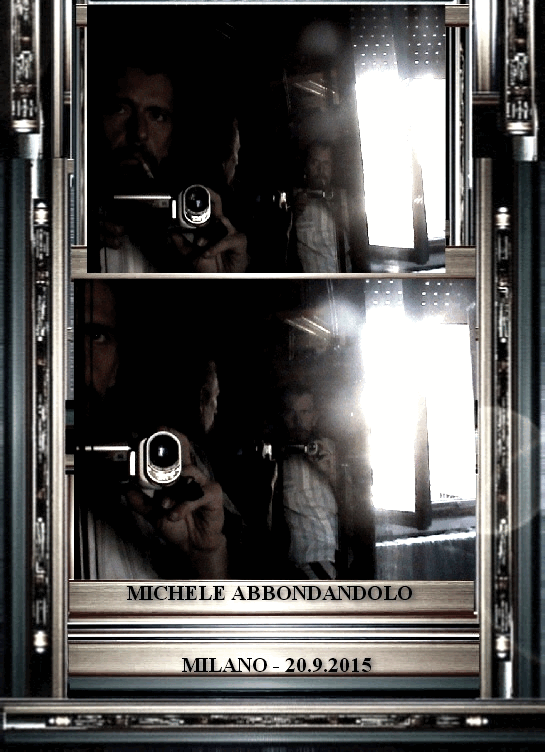


-

- ___Striker

-

